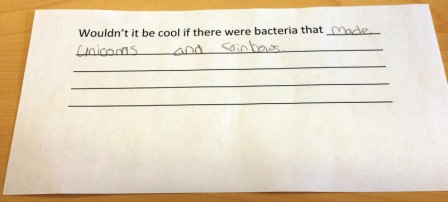Team:WPI-Worcester/Outreach
From 2014.igem.org
m |
|||
| (23 intermediate revisions not shown) | |||
| Line 569: | Line 569: | ||
<li><a href="https://2014.igem.org/Team:WPI-Worcester/Team">Bios</a></li> | <li><a href="https://2014.igem.org/Team:WPI-Worcester/Team">Bios</a></li> | ||
<li><a href="https://2014.igem.org/Team:WPI-Worcester/Team-Gallery">Team Gallery</a></li> | <li><a href="https://2014.igem.org/Team:WPI-Worcester/Team-Gallery">Team Gallery</a></li> | ||
| + | <li><a href="https://igem.org/Team.cgi?id=1423">Official Team Page</a></li> | ||
</ul> | </ul> | ||
</li> | </li> | ||
| Line 574: | Line 575: | ||
<li><a href="#"><center><img src="https://static.igem.org/mediawiki/2014/4/41/WPI_Project_Link.png"/></center><p>Project</p></a> | <li><a href="#"><center><img src="https://static.igem.org/mediawiki/2014/4/41/WPI_Project_Link.png"/></center><p>Project</p></a> | ||
<ul> | <ul> | ||
| - | + | <li><a href="https://2014.igem.org/Team:WPI-Worcester/Motivation">Motivation</a></li> | |
<li><a href="https://2014.igem.org/Team:WPI-Worcester/Background">Background</a></li> | <li><a href="https://2014.igem.org/Team:WPI-Worcester/Background">Background</a></li> | ||
| - | + | <li><a href="https://2014.igem.org/Team:WPI-Worcester/Overview">Project Overview</a></li> | |
<li><a href="https://2014.igem.org/Team:WPI-Worcester/Future-Applications">Future Applications</a></li> | <li><a href="https://2014.igem.org/Team:WPI-Worcester/Future-Applications">Future Applications</a></li> | ||
| Line 586: | Line 587: | ||
<li><a href="https://2014.igem.org/Team:WPI-Worcester/Our-Construct">Our Construct</a></li> | <li><a href="https://2014.igem.org/Team:WPI-Worcester/Our-Construct">Our Construct</a></li> | ||
<li><a href="https://2014.igem.org/Team:WPI-Worcester/Proof-of-Principle">Proof of Principle</a></li> | <li><a href="https://2014.igem.org/Team:WPI-Worcester/Proof-of-Principle">Proof of Principle</a></li> | ||
| - | <li><a href="https://2014.igem.org/Team:WPI-Worcester/ATF1"> | + | <li><a href="https://2014.igem.org/Team:WPI-Worcester/ATF1">Better BioBrick Characterization</a></li> |
| - | <li><a href="https://2014.igem.org/Team:WPI-Worcester/Biobricks"> | + | <li><a href="https://2014.igem.org/Team:WPI-Worcester/Biobricks">BioBricks</a></li> |
<li><a href="https://2014.igem.org/Team:WPI-Worcester/Medal-Fulfillment">Medal Fulfillment</a></li> | <li><a href="https://2014.igem.org/Team:WPI-Worcester/Medal-Fulfillment">Medal Fulfillment</a></li> | ||
| Line 604: | Line 605: | ||
<li><a href="#"><center><img src="https://static.igem.org/mediawiki/2014/d/d4/WPI_Safety_Link.png"/></center><p>Practices</p></a> | <li><a href="#"><center><img src="https://static.igem.org/mediawiki/2014/d/d4/WPI_Safety_Link.png"/></center><p>Practices</p></a> | ||
<ul> | <ul> | ||
| + | <li><a href="https://2014.igem.org/Team:WPI-Worcester/Outreach">Outreach</a></li> | ||
<li><a href="https://2014.igem.org/Team:WPI-Worcester/Survey">Survey</a></li> | <li><a href="https://2014.igem.org/Team:WPI-Worcester/Survey">Survey</a></li> | ||
| - | |||
<li><a href="https://2014.igem.org/Team:WPI-Worcester/Collaborations">Collaborations</a></li> | <li><a href="https://2014.igem.org/Team:WPI-Worcester/Collaborations">Collaborations</a></li> | ||
<li><a href="https://2014.igem.org/Team:WPI-Worcester/Interlab">Interlab Study</a></li> | <li><a href="https://2014.igem.org/Team:WPI-Worcester/Interlab">Interlab Study</a></li> | ||
| Line 627: | Line 628: | ||
</br> | </br> | ||
| - | <h4> | + | <h4>Outreach</h4><h9>Survey of Farmers</h9> |
| - | <p> | + | <p>To determine whether or not our diagnostic tool for Caprine Arthritis Encephalitis Virus would be used in the farming community, a survey was distributed to farmers throughout New England. For more information, please visit our <a href="https://2014.igem.org/Team:WPI-Worcester/Survey">Survey</a> page. </p></br> |
| + | |||
| + | <p><center><img src="https://static.igem.org/mediawiki/2014/a/a6/Compressed_goats.jpg"/></center></p> | ||
| + | |||
| + | <h9>Women in Science Day Camp</h9> | ||
| + | <p>In July, we hosted 30 girls from the Women in Science Day Camp for an afternoon. This camp is designed to teach girls between the ages of 10 and 12 about science and engineering. To teach the girls about synthetic biology, we prepared 3 activities: a rainbow gel, a pollution sniff test, and a DNA paper puzzle. These activities are outlined in a curriculum so they can be used and adapted by others who are interested in giving a hands on lesson on synthetic biology. </p> | ||
| + | <p><a href="https://static.igem.org/mediawiki/2014/9/99/WPI_Introduction_to_Synthetic_Biology_Curriculum.zip">Here is the full curriculum file.</a></p></br> | ||
| + | |||
| + | <p><center><img src="https://static.igem.org/mediawiki/2014/9/90/WPI_WomenInSciencePaper.jpg"/></center></p> | ||
| + | |||
| + | <p><center><img src="https://static.igem.org/mediawiki/2014/d/d9/WPI_RainbowGel.jpg"/></center></p> | ||
| + | |||
| + | |||
| + | <h9>Wachusett Regional High School Presentations</h9> | ||
| + | <p>In August, we visited rising sophomores at the Science Project and Equipment Camp (SPeC) at Wachusett Regional High School. We spoke to them about synthetic biology and our iGEM project. In December, we will return to Wachusett to give our Jamboree talk to students in the Wachusett Science Seminar. </p></br> | ||
| + | |||
| + | <p><center><img src="https://static.igem.org/mediawiki/2014/e/ee/WPI_SPeC.jpg"/></center></p> | ||
| + | |||
| + | <h9>Intro to Biotechnology Lecture</h9> | ||
| + | <p>In October, we prepared a lecture for students taking Intro to Biotechnology. We taught them about synthetic biology, introduced them to iGEM, and practiced our Jamboree talk. We hope that it sparked interest in the iGEM program for next year.</p></br> | ||
| + | |||
| + | <h9>Biotech Club Lecture</h9> | ||
| + | <p>We also practiced our Jamboree talk at a meeting for WPI’s Biotech Club in October. Afterward, we asked members of the club questions about our presentation and asked them to give us feedback.</p> | ||
| - | |||
| - | |||
</br> | </br> | ||
Latest revision as of 22:48, 17 October 2014
Team:WPI-Worcester
From 2014.igem.org
Outreach
To determine whether or not our diagnostic tool for Caprine Arthritis Encephalitis Virus would be used in the farming community, a survey was distributed to farmers throughout New England. For more information, please visit our Survey page.

In July, we hosted 30 girls from the Women in Science Day Camp for an afternoon. This camp is designed to teach girls between the ages of 10 and 12 about science and engineering. To teach the girls about synthetic biology, we prepared 3 activities: a rainbow gel, a pollution sniff test, and a DNA paper puzzle. These activities are outlined in a curriculum so they can be used and adapted by others who are interested in giving a hands on lesson on synthetic biology.
Here is the full curriculum file.


In August, we visited rising sophomores at the Science Project and Equipment Camp (SPeC) at Wachusett Regional High School. We spoke to them about synthetic biology and our iGEM project. In December, we will return to Wachusett to give our Jamboree talk to students in the Wachusett Science Seminar.

In October, we prepared a lecture for students taking Intro to Biotechnology. We taught them about synthetic biology, introduced them to iGEM, and practiced our Jamboree talk. We hope that it sparked interest in the iGEM program for next year.
We also practiced our Jamboree talk at a meeting for WPI’s Biotech Club in October. Afterward, we asked members of the club questions about our presentation and asked them to give us feedback.
 "
"
 "
"







